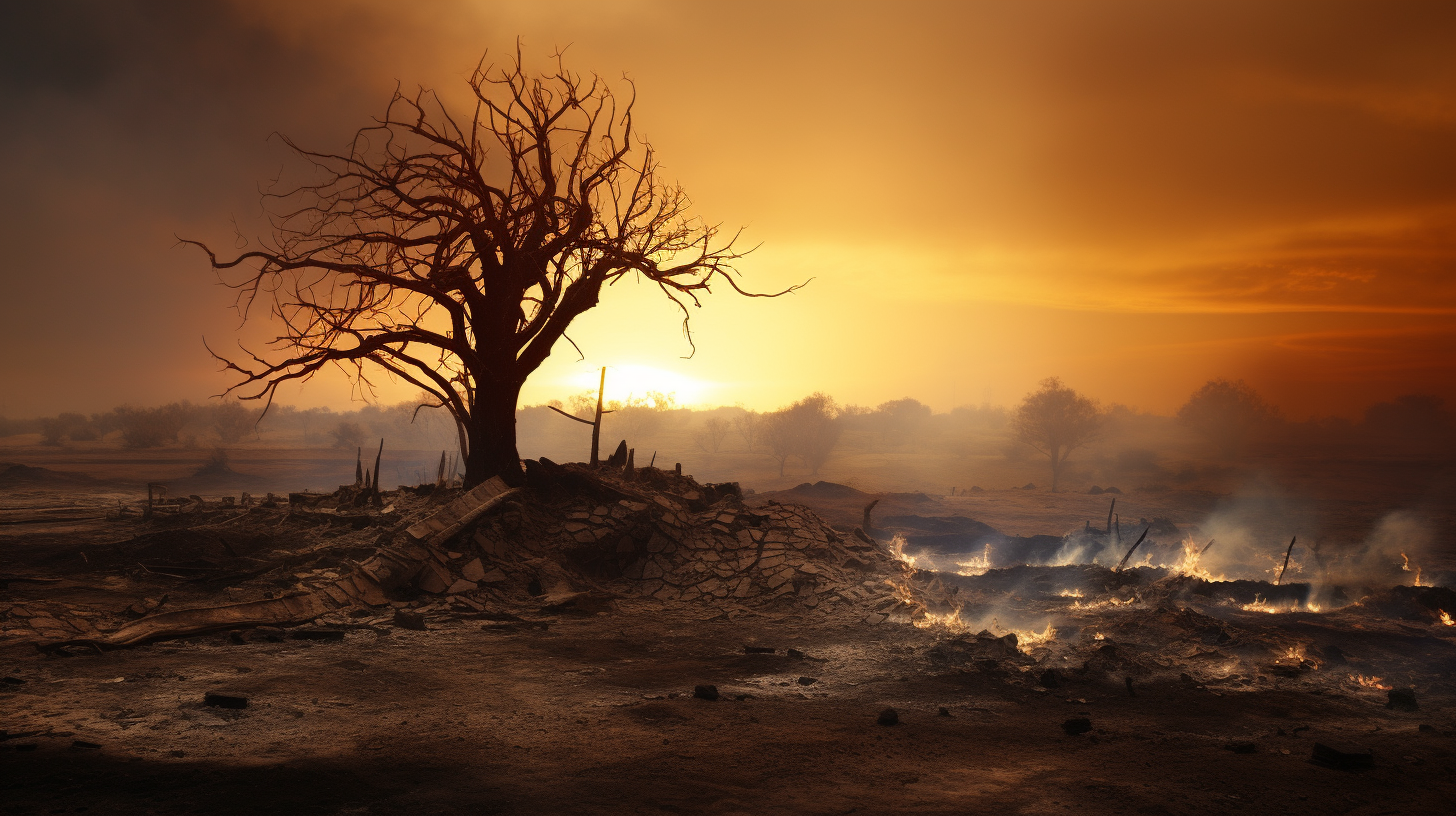The once-verdant countryside we lovingly reminisced about is now the latest offering to the insatiable inferno of climate-induced calamities. What we witness today are Drought Fires, a merciless transfiguration of green pastures into a blackened wasteland. These blazes are rewriting the elegy of our planet, verse by dismal verse, as they decimate forests, farmland, and our hope alike.
Where there was once the serene rustling of leaves, there is now the ceaseless crackling of fire.
The phenomenon isn’t novel but an evil offspring from the relentless droughts plaguing our world. Evolved from the coalescence of desiccated earth and an ever-heating climate, these fires rage with a ferocity leaving the bravest of firefighters reticent and the most eloquent of poets wordless.
Our narrative snakes along the charred vines of vineyards in Tuscany, sweeps through the scorched fields of Kansas, and traverses the ash-laden byways of the Australian bush. These posts are not merely markers of ecological devastation but epitaphs for what could have been a serene coexistence with nature.
What fuels this blazing cacophony? Probes into this grim spectacle reveal a tableau of human indifference and climatic roulette. Heatwaves lasting longer than some of history’s most notorious sieges have turned once-moist soils into tinderboxes, eagerly awaiting a spark from lightning—or more disgracefully, human carelessness—to ignite.
‘We’ve seen fires,’ shares an aged farmer, his gaze distant, ‘but not this voracious. It’s as if the land itself is parched for the tears we cannot shed.’
In regions where agriculture was once the rhythm of life, these Drought Fires are now the dance of death, an aria so constant that smoke has become a regular note in the local air.
Imagery of the unending march of flames is fodder for our nightmares but should serve as an urgent clarion call. The consistent connectivity between ‘Unquenchable – The Rise of Fire Tornadoes’ and the ensuing Drought Fires suggests a new, yet hopelessly foreseen chapter in our dystopian reflection on the ongoing environmental saga.
The grievance is in knowing that these fires are a caustic reminder of prophecies penned not by oracles but by scientists, whose warnings were inscribed in ignored reports and stifled voices.
Technological advancements that might have once been envisaged as potential remedies have become mere Gadarene swine, rushing to an eventual submergence in solar flare and embers. Those living on the fringes of these infernos have adapted—not out of choice but necessity—to a life where the horizons are perennially blurred by soot and the sun is but a muted specter.
Rural hamlets and once-thriving agricultural districts have been reduced to what some survivors call ‘the Cinderscape.’ Here, resilience isn’t lauded; it’s expected—though in truth, it’s nothing short of miraculous.
As we delve deeper into the annals of this new ecological dark age, we find that the impact of Drought Fires goes beyond immediate loss. The conflagrations consume not just the land, but also the very air we breathe, siphoning off the oxygen while bequeathing carbon, volatility, and unrest in its wake.
Our journey concludes not with a seraphic foresight of rejuvenation, but a somber acknowledgment that these fires aren’t an end but a continuum—a macabre and inextinguishable cycle. As the ashes settle, we understand that these aren’t just Drought Fires. They are the funeral pyres of a future we could have salvaged.
